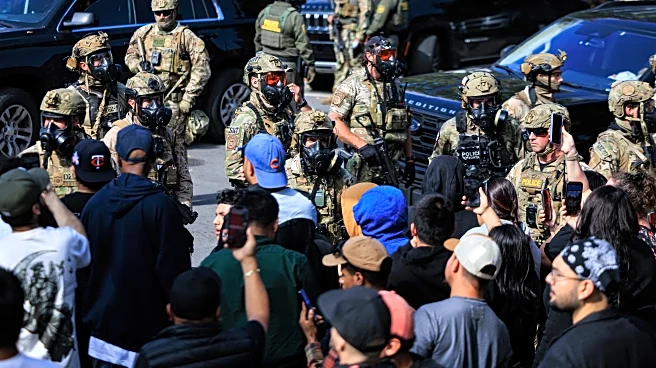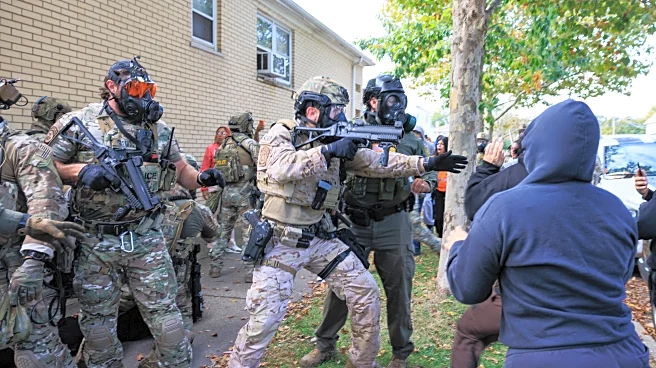What's Happening?
A video has emerged showing Immigration and Customs Enforcement (ICE) agents allegedly ramming the truck of an immigrant rights activist in Oxnard, California. The incident occurred during an immigration
operation, sparking controversy and public outrage. Federal agents claim the activist was the aggressor, but the video released by VC Defensa, an immigrant rights group, suggests otherwise. The video shows a Jeep Cherokee tailing and then ramming the activist's truck, leading to his arrest. The incident has raised questions about the conduct of federal agents during immigration operations, with activists accusing ICE of using intimidation tactics against those opposing President Trump's immigration policies.
Why It's Important?
The incident highlights ongoing tensions between federal immigration authorities and immigrant rights groups, particularly in areas frequently targeted by immigration raids. It underscores the broader debate over immigration enforcement practices under President Trump's administration, which has been criticized for its aggressive approach. The controversy may impact public perception of ICE and its operations, potentially influencing policy discussions and legal actions regarding immigration enforcement. Activists and community members are concerned about the implications for civil liberties and the safety of those involved in immigration protests.
What's Next?
The incident may lead to increased scrutiny of ICE's practices and calls for accountability. Legal challenges could arise, with activists and attorneys potentially seeking investigations into the conduct of federal agents. Community groups may intensify their efforts to document and protest immigration raids, while federal agencies might review their operational protocols to address public concerns. The situation could also prompt discussions among policymakers about the balance between immigration enforcement and civil rights.
Beyond the Headlines
The incident reflects deeper issues related to immigration policy and enforcement in the U.S., including the ethical considerations of using force in civilian interactions. It raises questions about the transparency and accountability of federal agencies, as well as the potential impact on community trust and cooperation with law enforcement. The case may contribute to ongoing debates about the role of federal agents in local communities and the broader implications for immigrant populations.












